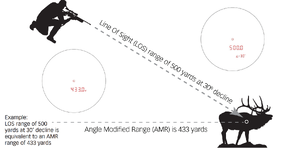I am curious to read the nathan foster stuff, is that something I can find with a google search? That also more or less mirrors what Form has said on the topic, i.e. LRX requires lower velocity than ttsx and other traditional monos, and somewhere between 2000-2400 is "safe" depending on how much room for error you want to maintain (I've heard all the above at times). I dont have the extensive experience, and I dont have any experience near low velocity threshold (all mine between 2400-2600 with ttsx were fine), so curious.I shot monos for years. Still do but I favor bonded with high weight retention. Barnes does state 1800 fps minimum and LRX down to 1600 fps. Personally, I keep impact velocity > 2200 fps and never had any issues.
I did some testing with reloads. Not entirely perfect but best I could do. 1800-2000 fps minimal opening and not more than the diameter of the bullet. 2000-2200 fps some opened perfect others less than diameter of bullet. > 2200 fps all opened perfectly. Sample: Barnes 150 grain TTSX.
Nathan Foster (Terminal Ballistics), regarding monos, recommends > 2400 fps with monos. 2200-2400 fps he recommended high shoulder shots to quickly anchor game. Below 2200 fps he states delayed killing occurs.
Obviously with perfect shot though major vessels (Aorta, Vena Cava, Etc), will kill well below 2000 fps.
FWIW
For what its worth this is the email exchange I JUST had directly with Barnes customer service:
Sent: Saturday, October 7, 2023 4:28 PM
To: Barnes Customer Service <[email protected]>
Subject: 129gr LRX .277 minimum impact velocity?
Hi,
What is your recommended minimum impact velocity to achieve greater than caliber diameter expansion in the .277 caliber 129gr LRX bullet?
From: @barnesbullets.com>
Sent: Tuesday, October 10, 2023 10:50 AM
Subject: FW: 129gr LRX .277 minimum impact velocity?
Thank you for choosing to shoot Barnes Bullets, all copper bullets. 1400 fps will get you about 1.7x expansion of the bullet's original diameter. If 2x expansion is desired then add approximately 100-200 fps.
Thank You
| Consumer Service
Barnes Bullets
Sent: Thursday, October 26, 2023 3:34 PM
To: @barnesbullets.com>
Subject: Re: 129gr LRX .277 minimum impact velocity?
Thank you. 1400 is far lower than I have ever heard before for a copper bullet, its even significantly lower than long-range specific lead bullets I'm aware of, so I'm surprised to hear that. Is there a caveat about bullet placement along with that, or can I expect 100% of my double-lung shots (ie no bone, etc) to expand to 2x caliber diameter at 1600fps?
Is there a chart or some publication you could send or point me toward with recommended velocities like this for various barnes bullets? It seems there are different velocities recommended for different specific bullets, even different weight bullets within one caliber/family.
Thanks very much,
From: @barnesbullets.com>
Sent: Thursday, October 26, 2023 5:48 PM
To:
Subject: RE: 129gr LRX .277 minimum impact velocity?
Hit the shoulder, a rib, between two ribs, angle in from the gut…..does not matter. All our LRX, TTSX and TSX bullet are designed to hit full expansion by the time they penetrate 1” to 1.5”…..MAX. Usually quicker. At which point they dump all their hydrostatic shock to the animal. Then, with the monolithic copper construction the bullet retains 100% wieight or nearly so, causing DEEP penetration. Best of both worlds! That 139 LRX is the lowest of our LRX expansion numbers. Typically 1500 to 1800, depending on which bullet. A couple, 22 cal 77 LRX and 25 cal 101 gr LRX are 1900 fps.
No. Sorry, no chart. Sort of a call/email me situation.
Thank You
| Consumer Service
Barnes Bullets
I am not keen to test this especially given the "marketing language" in the reply, but it makes it hard for a guy to know where to land in deciding where his own velocity cutoff will be. At minimum it seems clear it is different for various bullets even within same brand and "family".
Last edited:

